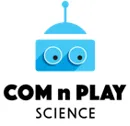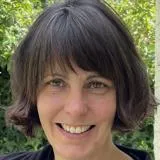COM n PLAY Science
The COM n PLAY Science project aims to better understand the ways in which young people learn when they participate in informal activities such as coding, making and gaming that are framed by play and/or fun.
Relatedly, this project considers how best to support youth engagement in these spaces of STEM (science, technology, engineering and mathematics) beyond the classroom. Makerspaces are informal, creative spaces where people come together to invent, create and make and the COM n PLAY project is exploring activities in makerspaces across Europe, with a target age group of young people aged 11-19 years.
The project brings together a consortium of institutions from across Europe and is co-ordinated by Professor Michail Glannakos, Norwegian University of Science and Technology.
Other consortium members include:
- King’s College London
- University of Oulu, Finland
- Foundation for Research and Technology, Greece
- Eindhoven University of Technology, Netherlands
- Uppsala University, Sweden
- Technical University of Munich, Germany
- University of Malta, Malta
- Design for Change Initiative, Spain
- The Science Museum Group
The team working on the project hope to identify how to share the learning opportunities in informal settings and provide evidence for future policy making around equitable science engagement across Europe and beyond.
KCL’s participation brings expertise around facilitating learning in non-school settings, and experience of implementing a science capital approach to teaching and learning with the aim of supporting more youth equitable engagement.
Making and coding are emerging areas of interest for supporting engagement in STEM, and the COM n PLAY Science project hopes to draw on different European approaches and contexts to further understanding of this avenue for widening participation in STEM. In particular the research seeks to develop a policy ‘roadmap’ for Europe setting out the potential impact of coding, making and play-based informal science learning across the short, medium and long-terms.
Aims
- To identify and collate diverse practices of informal science learning from across Europe including coding, making and gaming that are framed through play and/or fun
- To better understand the nature and impact of informal science learning gained through coding, making and gaming activities that are framed through play and/or fun
- To explore the extent to which these informal science learning spaces can democratise access to science learning
- To provide relevant guidance for educators, practitioners and policy makers in the field of science education.

Principal Investigator
Affiliations
Funding
Funding Body: European Commission
Amount: €3.1 million
Period: June 2018 - May 2021

